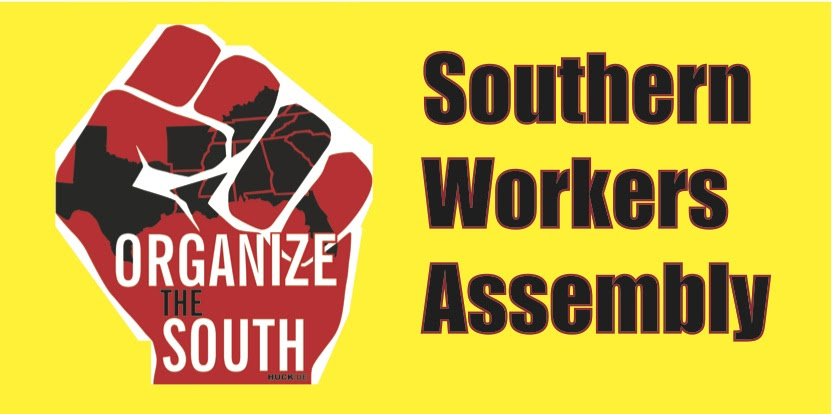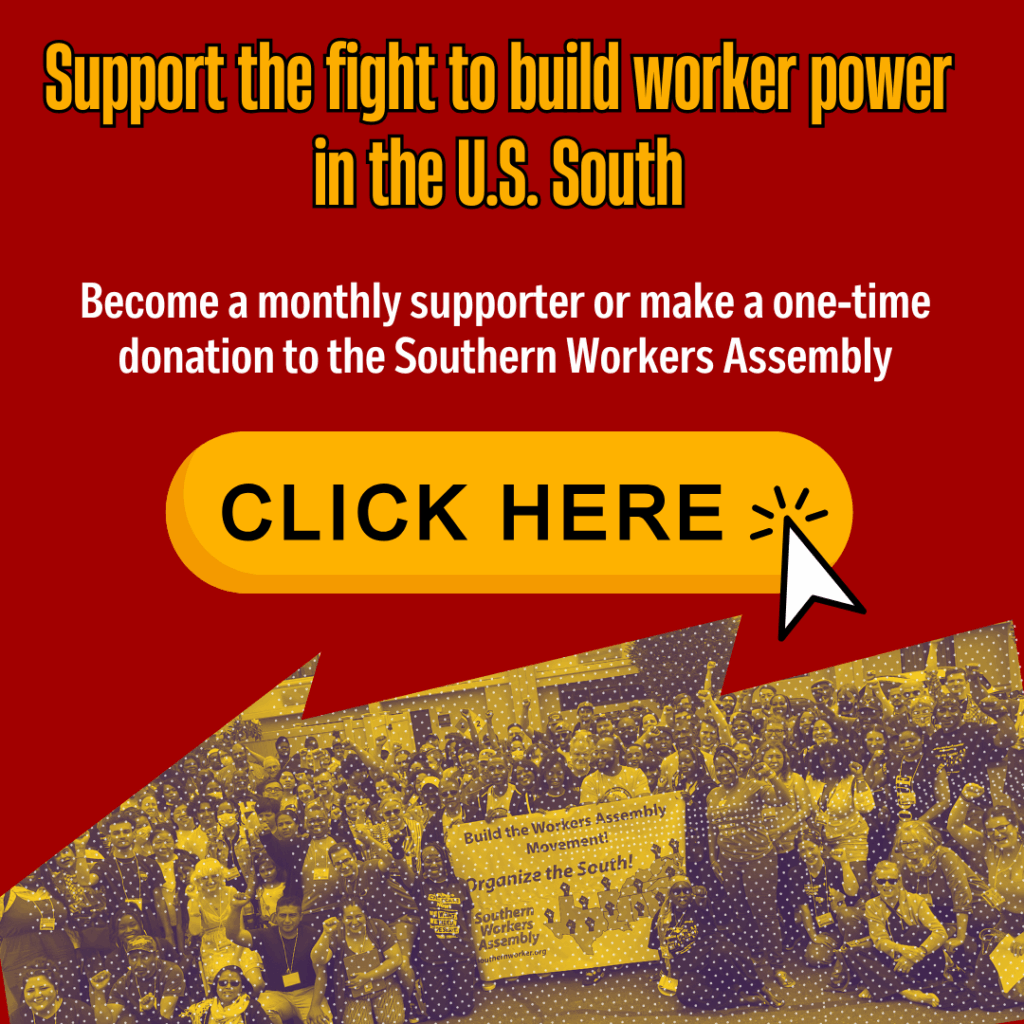“Why don’t we all go ask?”
“What?”
“Why don’t we all go? Management can brush it off if it’s just you, but if we all go they can’t ignore that.”
It’s a small thing really, a co-worker requesting a religious accommodation that won’t cost the company much money, but every worker knows how little Amazon cares about its employees. Warehouse workers have learned to expect that even the most minor accommodation will be denied and that management will take every opportunity to screw us over. But this time it’s different. This time over a dozen workers are walking up to the boss together and watching carefully as the request is made. Management folds instantly and agrees to the request- a surprise for most workers, but not for the handful of us that have been through this before.
This is a march on the boss, one of the basic tactics of the labor movement. Often it’s more organized, planned in advance with a written list of demands and with the majority of workers on shift marching together. This one is more spontaneous and informal, but it’s a start. It’s not the first action these workers have taken. Last summer they organized to demand better temperature control and the fixing of a broken fan. Before that it was getting the coffee machine fixed- an urgent necessity for night shift workers who rely on caffeine to endure 10 hour overnights in an Amazon warehouse. These victories are on small issues, almost insignificant in the grand scheme of things, but they represent immediate tangible results for the workers who organized them. They are demonstrations of the collective power of the working class, of the fact that when we’re organized Amazon has to listen.
The key is building shop floor committees. Workers have to be approached by their co-workers and drawn into the organization and shown its value in the everyday struggle for dignity and respect at work. This means focusing on immediate deliverables, not pie in the sky demands that are years away at best, and a focus on the day to day task of connecting with co-workers and finding out what issues matter to them. Workers organizing on the shop floor, fighting for basic respect and dignity, and winning is how we’re going to get a union at Amazon. Wins on small issues demonstrate the value of shop floor organization and get more co-workers involved, allowing for an escalation of demands and tactics in the next round. It’s a method of raising expectations and building confidence in what the working class can accomplish when we’re organized and willing to fight for it.
Amazon workers know we’re exploited; all we need to do to figure that out is take a look at the bruises on our arms or read a news report about a co-worker who died on the job due to heat stress and the fast pace of work. What most Amazon workers don’t know is what to do about that exploitation. Most workers’ first reaction to plans to organize is to assume that it can’t be done. Union organizing, such as that of the Amazon Labor Union and the Teamsters, is beginning to change that, but without a commitment to deep organizing on the shop floor it can never succeed.
Veteran Amazon workers, those that have stayed on more than a year in the face of over 100% annual turnover, take on a leading role here. We’ve endured the hellish summers and the absurd pace of work during peak season, and we’ve gained experience that we can pass on to new hires. Labor organizers should start with these veterans, reaching out to shop floor leaders, with offers of support and training. Political education on the role of the logistics industry in the economy, practical organizing skills and know your rights trainings, and resources to support organizing drives are the things that worker leaders desperately need and that outside supporters can supply.
There’s a change coming. I can hear it in the mornings, in the steady beat of a hundred feet moving in unison, in the muffled curses of angry workers speaking loud enough to make their displeasure known but quietly enough not to get fired, in the whispered word “union” slipped into a conversation with a trusted friend. I can see it in tired eyes on laughing faces, workers rejoicing in our strength and solidarity, even as we struggle. A thin line of my co-workers straggles out, footsteps no longer in unison, muscles fatigued from hours of work, faces the very picture of tiredness. But in those faces there’s something more than exhaustion, there’s anger there too. Lips pursed with barely suppressed rage, eyes steely and cold. Workers can only bear so much without fighting back. Every insult, every atrocity, every day at work is pushing it just a bit closer. We have to be organized for it.


